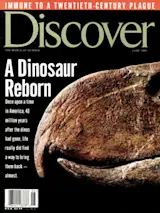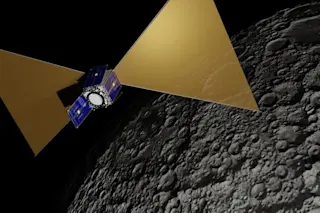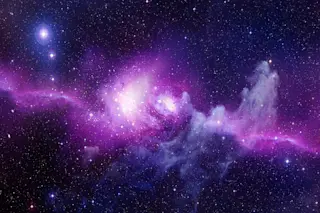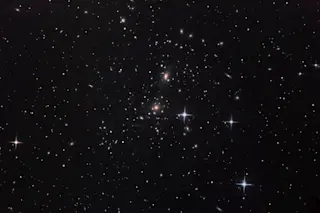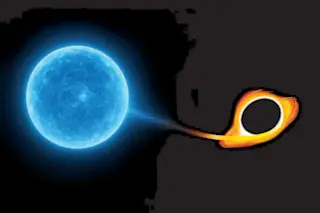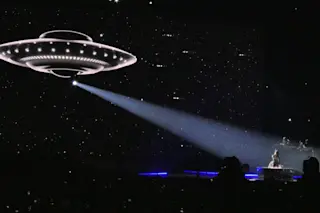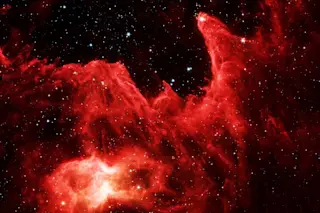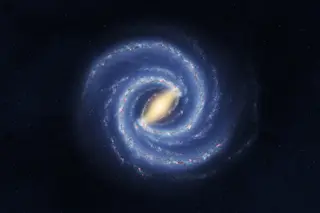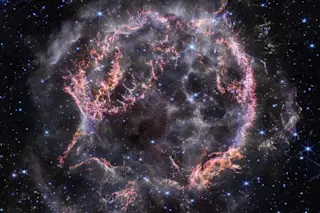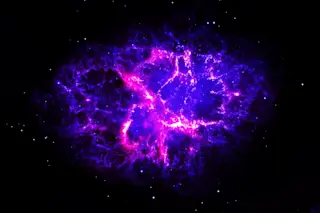For almost three years now astronomers have had to live with a paradox. In 1994 data from the Hubble Space Telescope indicated that the universe was younger than its oldest stars. Astronomers have floated all sorts of ideas to rectify the situation: some dredged up a cosmological fudge factor, once rejected by Einstein, that would make the universe a bit older; others proposed new ideas about how stars age in an attempt to make the oldest stars younger. Now two astronomers say they can resolve the conundrum. It seems everyone has been mismeasuring the size--and thus the age--of the universe.
The new data come from Hipparcos, a satellite launched by the European Space Agency eight years ago. Hipparcos compared the positions of stars in the nearest 1,000 light-years with objects much farther away. By droning away at this task, Hipparcos was able to measure the minute shifts that stars seem to make as Earth swings in its orbit--this parallax is similar to the shift your extended thumb makes when you look at it with one eye and then the other. Hipparcos’s measurements have led to an accurate catalog of the distances to local stars.
Astronomers use the distances to nearby stars as the basis for all other cosmological yardsticks. For example, once they know from parallax the distance to a particular type of nearby star, they can look for a similar star beyond the range of parallax measurements. By observing how much dimmer that second star seems compared with the nearby star, astronomers can gauge its distance.
One common scale uses stars called Cepheid variables, which pulsate in a way directly related to their intrinsic brightness--the longer the pulsation, the brighter the star. While even nearby galaxies are much too far away to show any parallax, Cepheid variables in these galaxies can be seen, their pulses timed, and their apparent luminosities measured. From this, astronomers can calculate their distance.
But all such models ultimately rest on parallax measurements, and before Hipparcos, no one had been able to get a useful parallax of a Cepheid variable in our own galaxy. Michael Feast of the University of Cape Town in South Africa and Robin Catchpole of the Royal Greenwich Observatory in England were able to use Hipparcos’s measurements of the distances to more than 200 Cepheid variables and found that Cepheids are slightly farther away than astronomers had believed. With this correction Feast and Catchpole recalculated the distance to the Large Magellanic Cloud and found that it is about 10 percent farther away than previously thought.
This result ripples in all sorts of directions. Accurate distance measurements are crucial to determining the age of our expanding universe. By measuring how light from receding galaxies gets stretched by the expansion, and knowing how far away the galaxies are, astronomers can measure the expansion rate. From that, they can determine how much time has passed since the universe was a single point.
The Hubble-based age of the universe used the Large Magellanic Cloud as a benchmark. The new LMC distance throws these calculations off by about 10 percent and makes the universe not 12 but 13 billion years old.
Even so, the most ancient stars--in globular clusters--had been pegged at 15 billion years old--still too old for the universe. But by changing the cosmic yardstick, Hipparcos affects measurements of globular clusters too. If these are farther away, then they must be intrinsically brighter. Astronomers know that younger stars are typically hotter and brighter than older stars. So if the clusters are brighter, they are at most 11 billion years old and the cosmic conundrum vanishes.
Feast is confident but cautions that these results need to be independently confirmed. If somebody shows that our results aren’t right, it would mean that there was something fundamentally wrong with our assumptions, says Feast. But of course the exciting thing is to look for these discrepancies.


